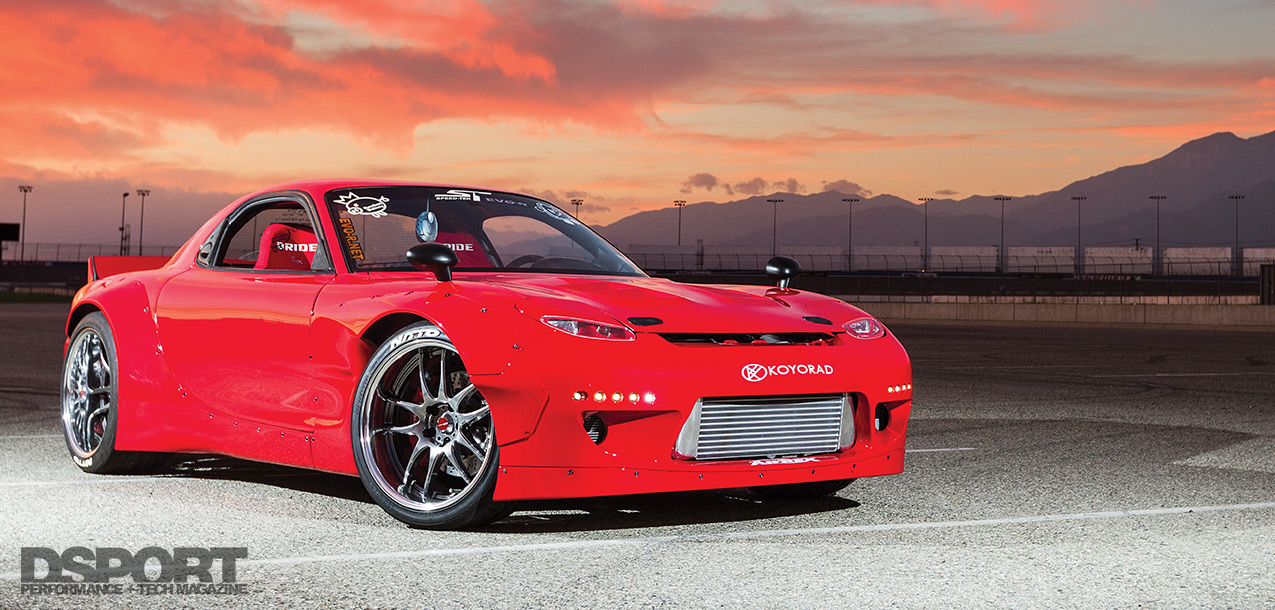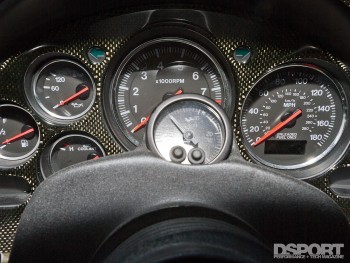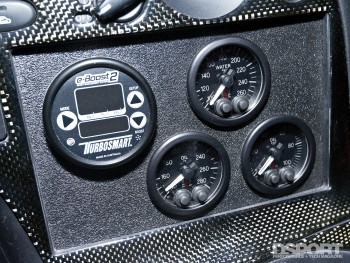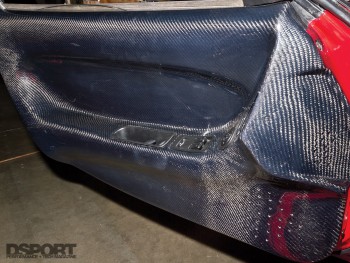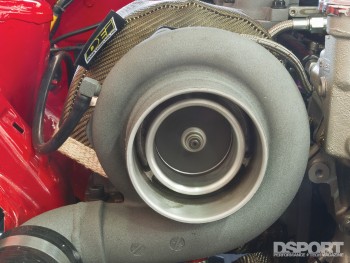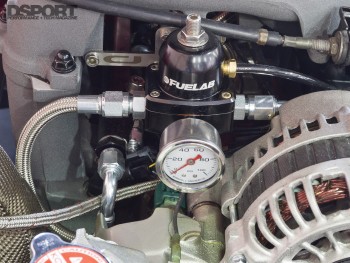Show car builds are meant to be eye candy. Some of the lengths that builders will go to in order to satisfy judging requirements would even make Liberace cringe. On the other hand, manufacturers work with tuning shops to build demo vehicles that take the “Best of Show” cars and combine them with the “Best of Performance” builds to deliver a machine worthy of praise that also delivers on performance.
Text and Photos by Richard Fong
Fiberglass Driven Venture
Jay Shieh, the owner of aftermarket parts manufacturer EVO R, wanted to have a feature car presence at the 2014 SEMA Show in Las Vegas. To make an impression, he needed to present something different, s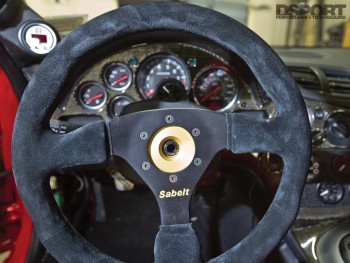 o he had to avoid building the same FR-S/BRZ/GT-R/STI that everyone else was bringing to the show. In the search for something unique, the decision was made when he managed to get the inside line on one of the first of TRA Kyoto’s Rocket Bunny wide body kits for the Mazda FD RX-7.
o he had to avoid building the same FR-S/BRZ/GT-R/STI that everyone else was bringing to the show. In the search for something unique, the decision was made when he managed to get the inside line on one of the first of TRA Kyoto’s Rocket Bunny wide body kits for the Mazda FD RX-7.
The FD platform fit his needs, but he would need help to complete the project in time for SEMA. He partnered up with his friend Mark Chin, the owner of RavSpec in Deer Park, New York. Chin’s passion for the RX7 along with his connections helped to make such a build feasible. They pooled their resources and started the project with Shieh providing the kit and car, while Chin took care of parts and construction. But taking an older car and making it look new again would require strategic partnerships, long hours and a lot of effort.
Stripped and Sprayed
Shieh purchased a 1994 Montego Blue Mica RX7 just two months before the SEMA Show. This made the build timeline brief, especially since the 20-year-old car was in need of some restoration. Turning to the rotary engine specialists at Speed Tek, who just happened to be within walking distance of Chin’s shop, the build process commenced. Once the shell had been completely gutted, it was brought to WD Ultimate Custom, where it underwent a color change to a generation correct Vintage Red Tri Coat. Then, the Rocket Bunny kit was fitted to the shell and sprayed to match before final installation.
EVO R carbon fiber accents adorn much of the interior, including the center console, dash, door panels and the trunk hatch cover. Stack gauges and a Turbosmart eBoost2 boost controller share the gauge panel where a double DIN head unit once was.
Restoration Efforts
While the body was undergoing surgical enhancement, Speed Tek began prepping the rest of the parts in anticipation of the shell’s return to the shop. Everything that could be reused was cleaned up and restored to a like new appearance. No detail was too small. For example, the suspension arms were sand blasted and rebushed, ready for installation in like new condition.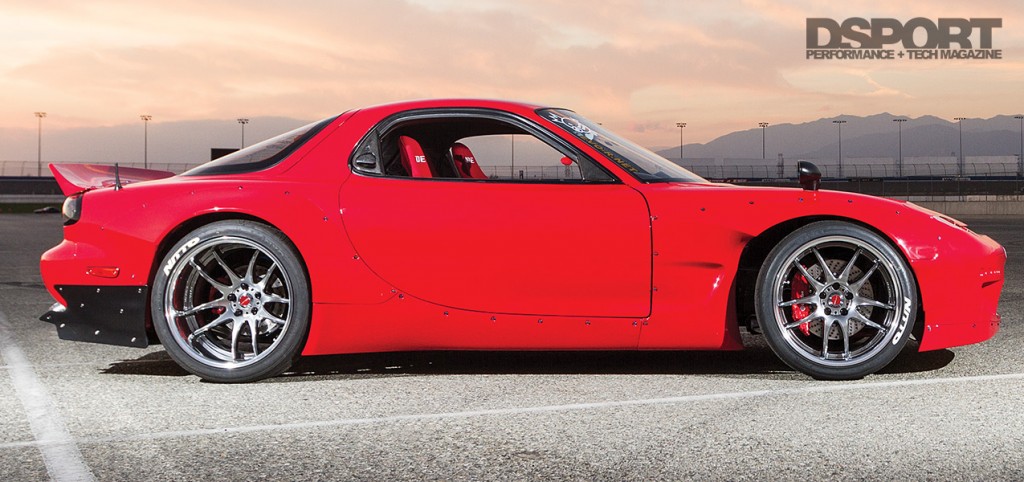
Rotary Revival
The 13B-REW engine was broken down and rebuilt to factory specifications. Speed Tek enhanced the rotor housings with its large street port, which can be likened to installing higher lift, longer duration camshafts in a four-stroke piston engine. This modification retains most of its street drivability while enhancing peak power potential. Speed Tek also fabricated an exhaust manifold that directs spent gasses into the turbine housing of a Garrett GT3582 turbocharger. A custom three-inch downpipe directs exhaust flow under the chassis to an aluminum three-inch exhaust finished with an oval muffler with down- turned exhaust tip.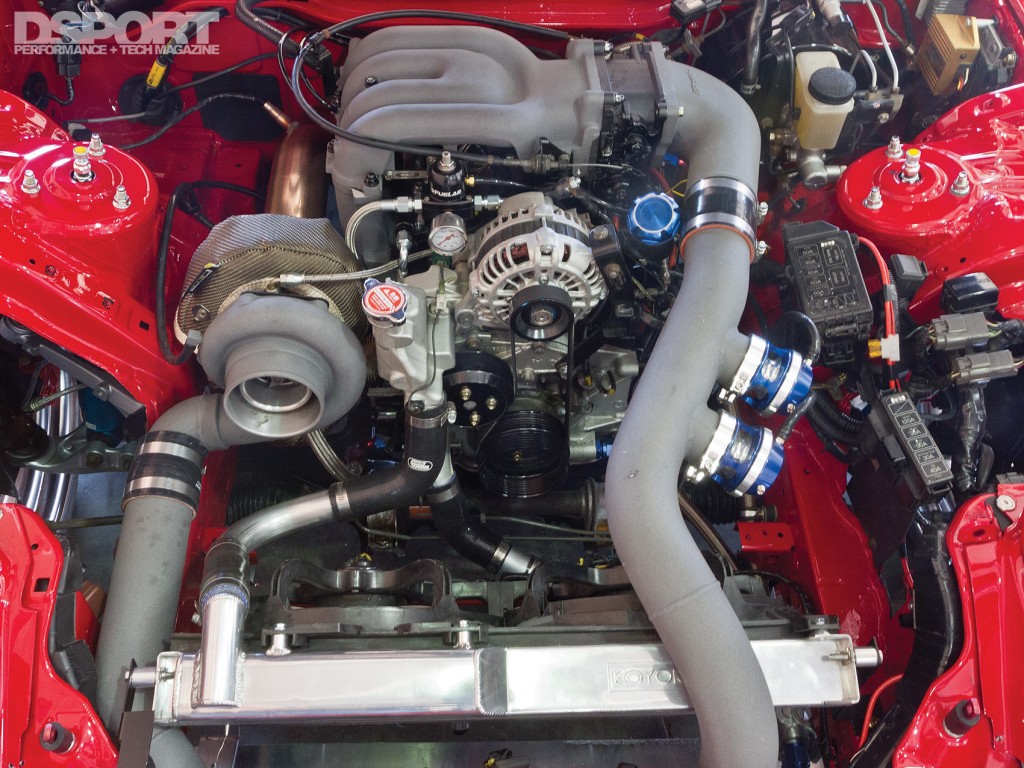
On the cool side, the compressor feeds the pressurized air charge into a GReddy LS intercooler. Once chilled, the denser charge flows through custom charge piping to a GReddy throttle body elbow. After the throttle body, the air charge rushes through the factory upper intake plenum for distribution to an Xcessive Mfg. lower intake manifold. As the charge reaches the enlarged intake ports, a quartet of Injector Dynamics ID1000 injectors delivers E85 fuel for combustion. An A’PEXi Power FC engine management system replaced the stock ECU to meter fuel, while also sending ignition signals to an HKS Twin Power DLI ignition amplifier. The increased ignition energy ensures that the NGK leading and trailing spark plugs efficiently combust the atomized fuel for optimal power production.


